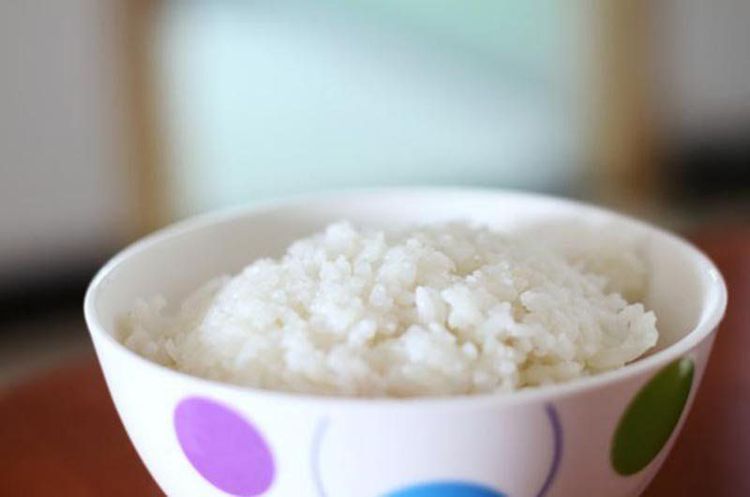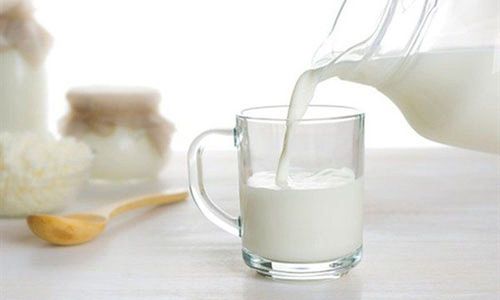1. When do children start eating rice?
According to pediatric nutrition organizations, children aged 6 months and older can begin eating solid foods during their main meals. Preparing meals for them can involve mashing, chopping, pureeing, or slicing with a variety of flavors, textures, and different types of foods, allowing the child to enjoy an unlimited diet.
Therefore, parents can safely introduce rice to their child at 6 months old, provided that the rice is prepared and served in a way that is safe for the child to eat without posing a choking hazard.
However, before starting rice, from around 4-6 months of age, parents should begin feeding their children soft, solid foods like cereals, oatmeal, barley, and specially pureed foods for infants. These cereals are typically mixed with infant formula or breast milk to create the perfect consistency. Manufacturers often add essential vitamins and minerals for the child’s growth and development when breast milk or formula alone no longer meets the child's nutritional needs. Moreover, these initial foods will help the child learn how to eat, adapt to new flavors and textures, and prepare their digestive system for a more varied diet.
Additionally, the timing for feeding mashed rice to children depends on the individual child. For preterm infants, low birth weight babies, or those with congenital conditions, the introduction of rice should be delayed. Parents may consider starting solid foods when the child:
- Can hold their head up well and has good head control
- Shows eagerness to eat or seems interested in food (opening their mouth when a spoon approaches or reaching for food that adults are eating)
- Can move food from the spoon into their mouth using their tongue
- Has doubled their birth weight

2. How to feed rice to your baby for the first time?
When preparing whole grain rice for your baby's meal, follow the cooking instructions on the package.
Additionally, ensure that the rice is thoroughly cooked so that it can be easily mashed with a fork and is soft enough for your baby to "chew" easily. Pediatricians also recommend that rice, wheat, barley, and other grains be mashed or ground before being fed to infants. Use the back of a fork or spoon to gently mash the rice before feeding it to your baby. Never feed your baby partially cooked rice.
However, when introducing rice to your child, the first meal doesn't have to be bland. Use seasonings to enhance the flavor, but minimize the use of salt. Additionally, parents can feed their baby any type of rice, such as white rice and other popular varieties like basmati, brown, or jasmine rice, as long as they are appropriately prepared. Like any other new food, exercise caution and wait a few days to observe how your baby reacts to it.
3. Is rice a choking hazard for infants?
Pediatric organizations have listed rice as a potential choking hazard for infants up to 24 months old, along with other weaning concerns. However, when rice is properly cooked and mashed, it can help minimize the risk, allowing the baby to enjoy this food.
Additionally, to prevent choking, it is important to ensure that the baby is carefully supervised during all meal times. Parents should also adhere to the following safety guidelines:
- Ensure the baby is sitting in the correct position while eating, not lying down or being held
- Use a high chair that is at table height for adults or a specialized feeding chair for babies.
- Avoid feeding the baby in a car or stroller.
Furthermore, similar to other foods, rice is also recommended for baby-led weaning. This is a style of introducing solid foods in which the baby can set the pace for mealtimes. It means that when given a plate of food by hand, the baby can choose the amount and type of food they prefer to eat, providing a more enjoyable and safer experience compared to traditional spoon-feeding.

4. Which rice is good for children?
Like all foods, some types of rice offer more nutritional benefits than others. It is important to consider the dietary benefits of different types of rice for children:
- Brown rice: Whole grain rice with the outer husk removed but still retains the bran and germ, containing important nutrients. Brown rice has more fiber and protein than white rice.
- Wild rice: A whole grain that has nearly three times more fiber and protein than white rice.
- White rice: This type of rice has had its bran and germ removed, unfortunately stripping away vitamins and fiber. When cooked, white rice is metabolized as a simple sugar and can cause spikes in blood sugar levels.
If parents are concerned about which type of rice is best for their child, any type of rice can be prepared for infants as long as it is appropriately cooked and the child is carefully monitored during meals to reduce the risk of choking and to manage any incidents of choking.
In summary, to answer the question of when to introduce rice to children, parents should wait until the child is at least 4-6 months old. At this age, children can start experiencing their first solid foods, including mashed rice, cereals, fruits, and pureed vegetables. Although every child is different, most children are generally ready to start enjoying solid foods safely between 6-8 months old, ensuring they receive essential nutrients during this stage.
During this age, in addition to providing a diverse range of foods, including rice, parents should also consider supplementing with essential micronutrients such as zinc, selenium, chromium, vitamins B1 and B6, ginger, and acerola extract (vitamin C). This helps enhance taste, improve appetite, achieve appropriate growth in height and weight, strengthen the immune system, and increase resistance to common illnesses and digestive issues.
Apart from diet, parents should also supplement their child's nutrition with products that contain lysine, essential trace minerals, and vitamins such as zinc, chromium, selenium, and B vitamins to fully meet the child's nutritional needs. These essential vitamins also support digestion, increase nutrient absorption, improve appetite, and promote overall development.
Regularly visit Vinmec.com for useful information to take care of your child and the whole family.
Reference source; bellybelly.com.au - srnutrition.co.uk - naturalbabylife.comTo arrange an appointment, please call HOTLINE or make your reservation directly HERE. You may also download the MyVinmec app to schedule appointments faster and manage your reservations more conveniently.








